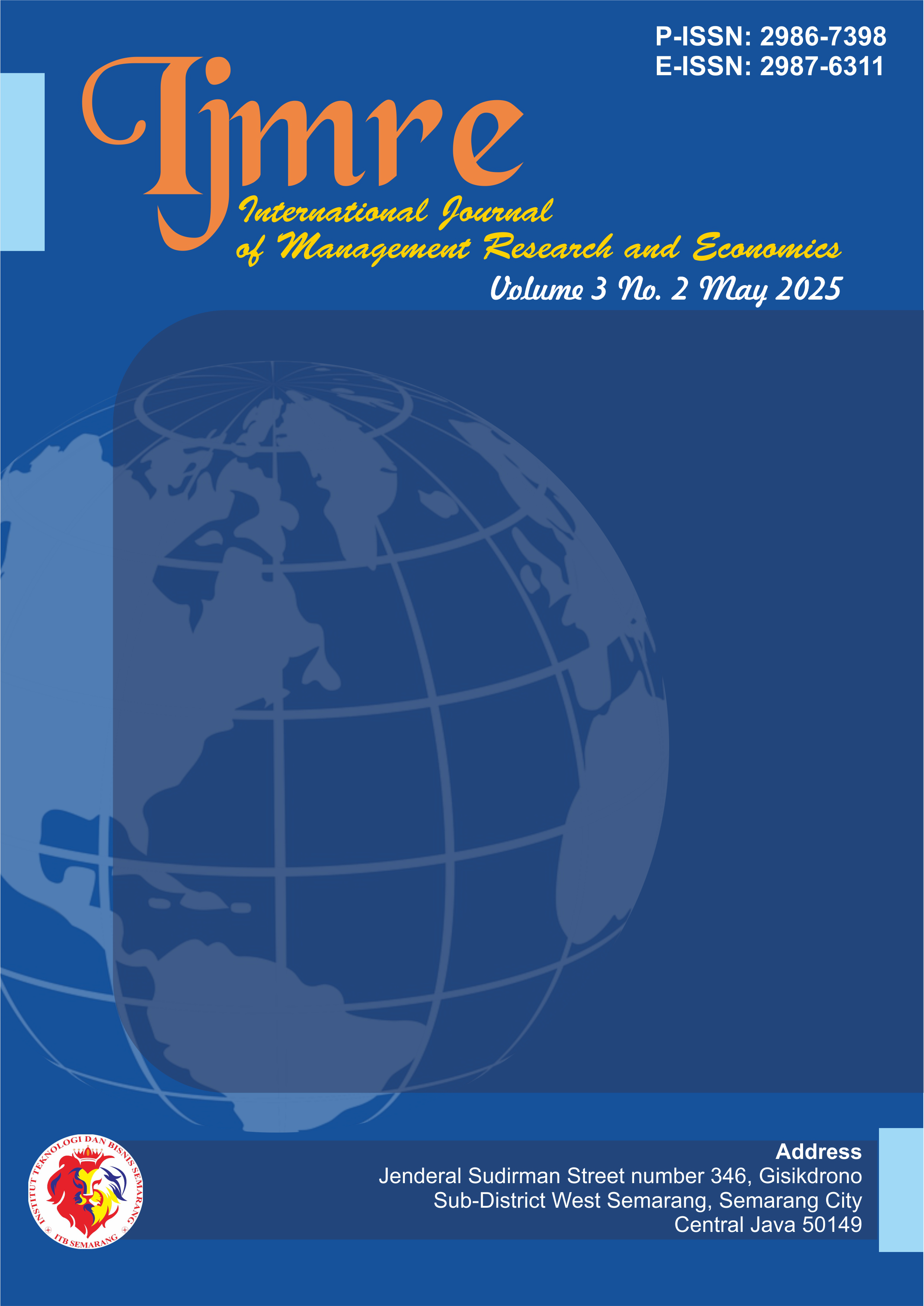Reconstructing the Role of Waqf in Indonesia's Islamic Financial Ecosystem: Institutional and Regulatory Analysis
DOI:
https://doi.org/10.54066/ijmre-itb.v3i2.3179Keywords:
national law, pillars of philanthropy, technologyAbstract
Waqf has long been a pillar of Islamic philanthropy and socio-economic development, yet its potential remains underutilized in Indonesia’s modern Islamic financial ecosystem. This article examines how waqf can be repositioned and optimized within Indonesia’s Islamic finance, focusing on institutional roles and regulatory frameworks. Adopting a qualitative approach that combines theoretical-conceptual analysis with case studies, we review Islamic legal principles, national laws, and recent innovations. We analyze three emblematic cases – L-Kaf Sidogiri (a pesantren-based waqf institution), Dompet Dhuafa (a prominent Islamic philanthropic foundation), and the Cash Waqf-Linked Sukuk (CWLS) – to illustrate successes and challenges in waqf management. Our findings reveal that while waqf is recognized as a key instrument in poverty alleviation and social welfare financing, its impact is limited by fragmented institutions, gaps in regulation, low public awareness, and governance weaknesses. However, successful models of productive waqf and financial innovation demonstrate the feasibility of an integrated waqf ecosystem. We discuss strategies to strengthen legal frameworks, enhance institutional capacity, and synergize waqf with Islamic banking, capital markets, and technology. The article offers policy recommendations toward “mainstreaming” waqf in Indonesia’s Islamic financial sector, thereby unlocking waqf’s potential for sustainable development.
References
Abdullah, Z. (2018). Priority Aspects of Waqf Management in Indonesia. Al-Falah: Journal of Islamic Economics, 3(1). (Discusses strategic priorities for improving waqf management effectiveness in Indonesia).
Badan Wakaf Indonesia (BWI). (2018). Core Principles for Effective Waqf Operation and Supervision. (Joint publication with Bank Indonesia and IRTI-IsDB; outlines 11 Waqf Core Principles to guide governance of waqf institutions).
Badan Wakaf Indonesia (BWI). (2021). Perkuat Ekosistem Perwakafan Nasional, BWI Perlu Bersinergi dengan Pemangku Kepentingan (Press release, 7 May 2021).
Beik, I. S., Sholihin, M., Lestari, Y. D., & others. (2023). The development of national waqf index in Indonesia: A fuzzy AHP approach. Heliyon, 9(5), e15834.
Dompet Dhuafa. (2022). Annual Report 2021: ZISWAF Management and Social Impact. Dompet Dhuafa Publishing. (Provides data on Zakat and Waqf funds collected and disbursed by Dompet Dhuafa, with case studies of health, education, and economic empowerment programs).
Fauzi, N. A. (2022). Productive Waqf for Family Economic Empowerment: Perspective of Law Number 41/2004 on Waqf. Ijtihad: Jurnal Wacana Hukum Islam dan Kemanusiaan, 22(1), 1-20.
Ghozali, M., & Annas, M. (2024). Waqf Management as a Means to Improve the Economic Strategy of the People. Istiqro: Journal of Islamic Law, Economics and Business, 10(2), 194-203.
Government of Indonesia. (2020). Sovereign Sukuk (SW-001) Issuance Decree. Ministry of Finance. (Authorizes issuance of the first Cash Waqf-Linked Sukuk SW-001, IDR 50 billion, 5-year tenor, for healthcare projects) (Government Issued First Cash Waqf-Linked Sukuk in 2020 - KarimSyah Law Firm).
Ihsan, H., & Ibrahim, S. H. H. M. (2011). WAQF accounting and management in Indonesian WAQF institutions: The cases of two WAQF foundations. Humanomics.
Karim, M. (2024). Government Issued First Cash Waqf-Linked Sukuk in 2020. KarimSyah Law Firm Newsletter, 27 June 2024.
Khamim, Muala, A., & Hakim, M. L. (2023). Cash Waqf Linked Sukuk for Islamic Social Welfare and National Development: Evidence from Indonesia. Global Journal Al-Thaqafah, 13(1), 39-52..
MUI – DSN (National Sharia Council). (2020a). Fatwa No. 133/DSN-MUI/II/2020 on Cash Waqf-Linked Sukuk.
MUI – DSN (National Sharia Council). (2020b). Fatwa No. 135/DSN-MUI/V/2020 on Waqf of Shares.
MUI (Majelis Ulama Indonesia). (2002). Fatwa MUI No. 2/2002 on Cash Waqf (Wakaf Uang).
Nasution, Lokot Zein, Diba A. Aris, M. Suryadinata, & Y. Nurhayanti. (2021). Reinforcing the Position of Waqf in the Islamic Financial Ecosystem in Indonesia. Al-Iqtishad: Jurnal Ilmu Ekonomi Syariah, 13(2), 150-170.
Senjiati, I. H., Sulistiani, S. L., & Mubarok, M. F. R. (2021). Analysis of Fiqh Waqf and Law No. 41/2004 regarding Nazhir Rights in Cash Waqf Management in Tapos Village. Amwaluna: Jurnal Ekonomi dan Keuangan Syariah, 5(2), 240-255.
Tanjung, H., Ayuniyyah, Q., Devi, A., & Yulianto, A. R. (2024). Waqf Core Principles Implementation Index in Dompet Dhuafa Foundation. In Proceedings of the 2nd IICASS 2024 (Advances in Social Science Research, vol. 871). Atlantis Press.
World Bank & BWI. (2022). Indonesia Waqf Report: Unlocking Waqf Assets for Social Impact.
Yusoff, M. E., et al. (2021). Charting Waqf Administration Challenges: A Multi-Country Perspective. Journal of Islamic Accounting and Business Research, 12(4), 475-490.
Downloads
Published
How to Cite
Issue
Section
License
Copyright (c) 2025 International Journal of Management Research and Economics

This work is licensed under a Creative Commons Attribution-ShareAlike 4.0 International License.







